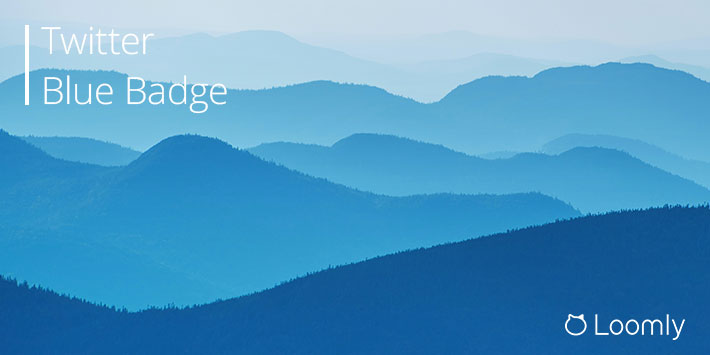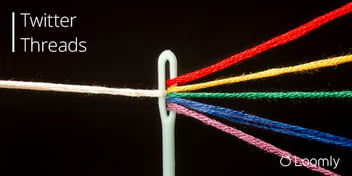Wondering how to get the famous Twitter blue badge? Reckon your brand could benefit from the much-coveted status symbol?
Good news!
In May 2021, after a 4-year hiatus, Twitter announced the verification for the blue checkmark was back. So now might be an opportune moment to look into it for your brand.
In this guide, you’ll learn what the Twitter blue badge is, why it matters for your brand, and how to get verified following the update.

Manage all your social media accounts in one place.
Craft, schedule, & auto-post content to all your social channels, then track analytics and manage interactions from a single, easy-to-use dashboard.
What is the Twitter Blue Badge?
The Twitter blue badge lets people know that an account of public interest is authentic and verified.
That means the account is not impersonating, manipulating, or spamming anyone – i.e. it’s not a bot. Nor is it violating any copyright or trademark laws.
A verified account has a blue seal with a small checkmark next to the username and appears in several places.
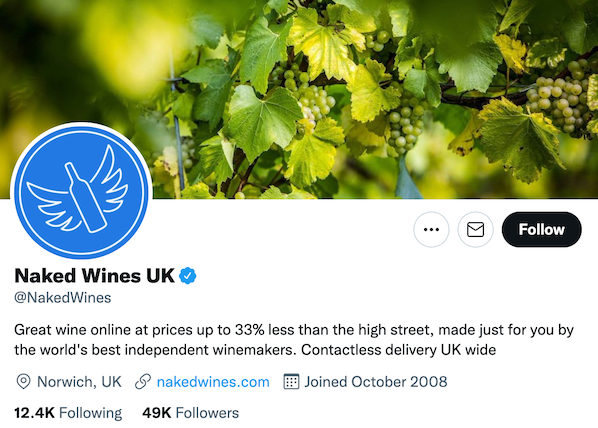
- In any tweet:
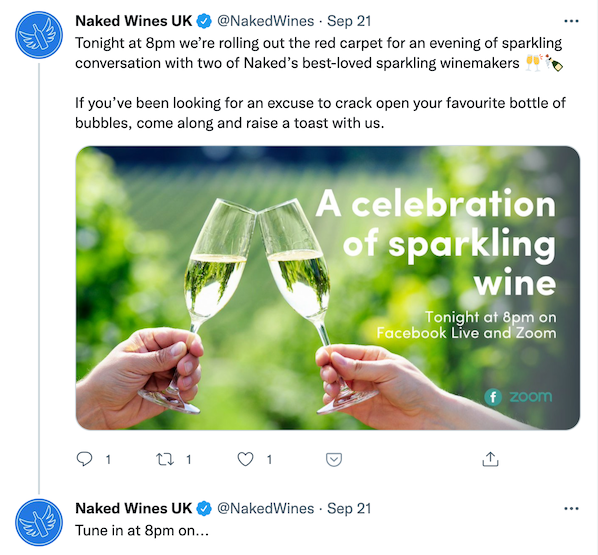
- In search results:
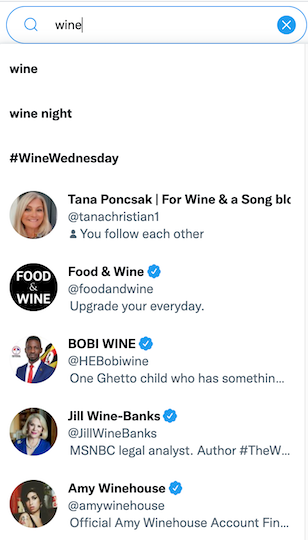
The official Twitter blue badges are always the same shape and color, so beware of any imitation symbols. And finally, the blue badge only means the account was deemed credible by Twitter – it’s not an endorsement.
Who can get a Twitter blue badge?
Anyone with an active and notable account can apply for a Twitter blue badge in the new verification process. But not everyone will be accepted.
Currently, Twitter is prioritizing the following six account categories:
- Government
- Companies, brands, and organizations
- News organizations and journalists
- Entertainment
- Sports and gaming
- Activists, organizers, and other influential individuals
In the future, Twitter will introduce more categories, such as those for scientists, academics, and religious leaders.
Why the Twitter Blue Badge Matters for Your Brand
There are several reasons why the blue badge is important for your brand.
- It shows your account is authentic
The blue badge helps people distinguish the authenticity of accounts that are of significant public interest.
Plus, it gives them more context about who they’re engaging with so that they can determine if it’s trustworthy.
So, for your brand, this would be a great start. Anyone searching for or checking your profile would know it’s safe to start a dialogue with you. And that you weren’t about to start spamming, manipulating, or misleading them.
- It shows your account is credible
Verified status builds credibility. Right away, users know that bots or an impersonator don’t run your account.
- It shows your account is of interest to the public
The blue badge might attract browsers to your brand and lead to an increase in followers.
Examples of Brands who Earned the Twitter Blue Badge
Here are a few brands from the six categories who’ve earned the Twitter blue badge.
Government: Barack Obama
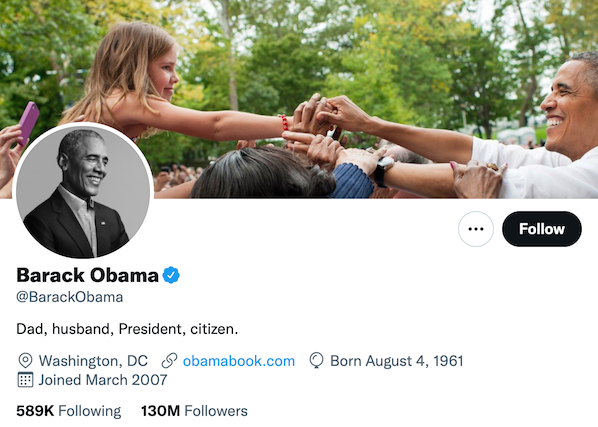
Former US President Barack Obama remains active on Twitter, tweeting about current political issues. According to Statista, he has the most followers on Twitter:
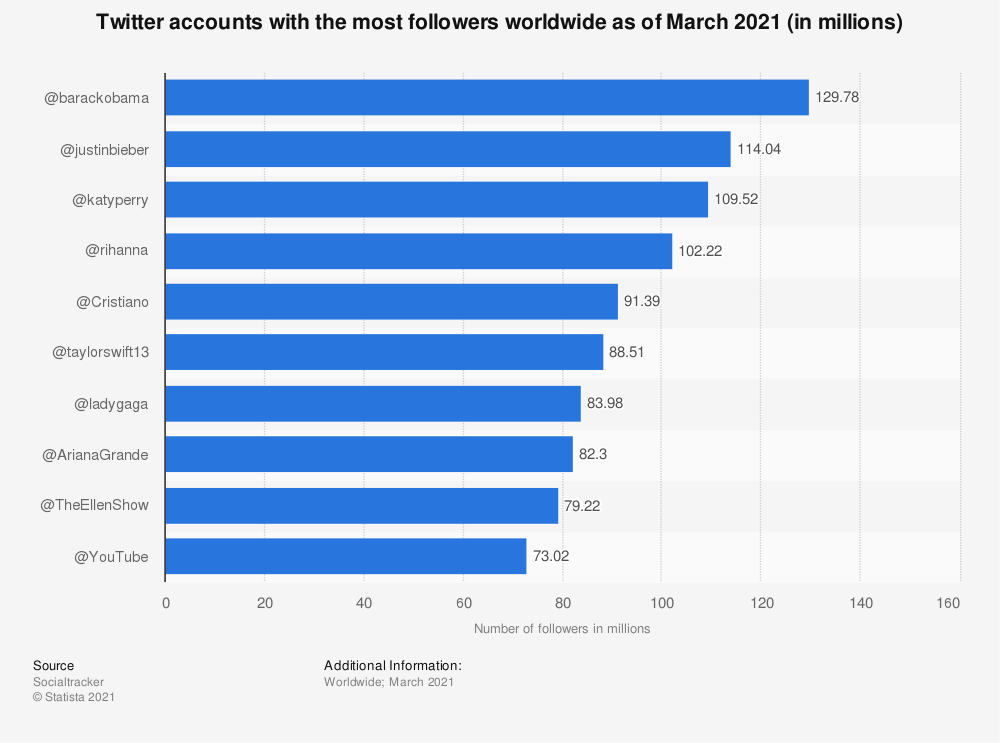
Companies, brands, and organizations: Nike
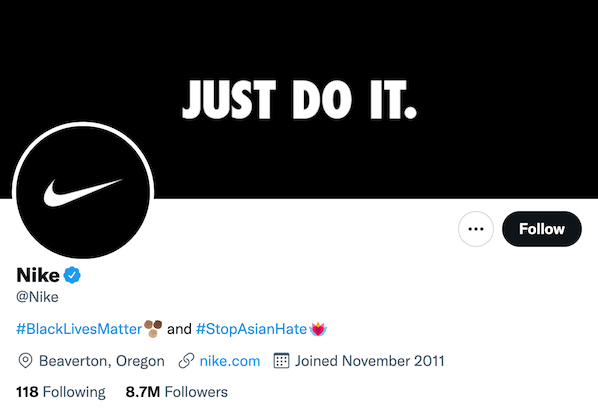
The sports brand Nike actively tweets about its products and the causes they support, like #BlackLivesMatter and #StopAsianHate, as highlighted in their profile bio.
News organizations and journalists: Matt Law
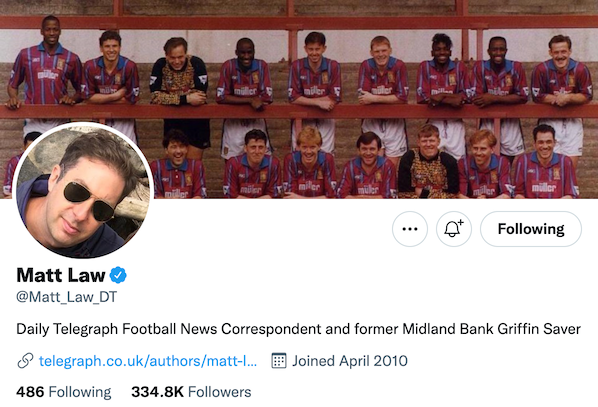
Matt Law is the football news correspondent for the Daily Telegraph in the UK. He shares football news stories by himself and fellow journalists, and tweets his personal opinions too.
The news organizations and journalists category includes:
- Any official accounts of qualifying news organizations, plus individual accounts of journalists employed by verified news organizations.
- Independent or freelance journalists with at least 3 bylines/credits in verified publications within the last 6 months.
Source: Twitter Help Center
Entertainment: Jim Carrey
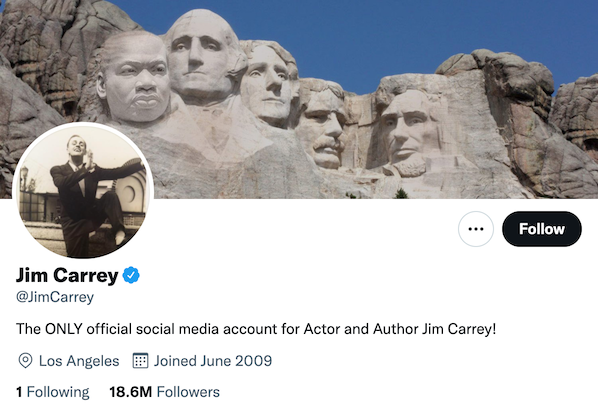
Actor and author Jim Carrey regularly tweets about past and present films, plus colleagues from the entertainment industry.
The entertainment category includes:
- Major entertainment companies, such as film studios, TV networks, and music entities.
- Official accounts of productions associated with these entities, such as films, events/festivals, or TV shows.
- Individual accounts of artists, performers, directors, and others in similar public-facing roles associated with such entities or their productions.
- Established digital content creators who have consistently published original content (regardless of platform) for at least 6 months.
Source: Twitter Help Center
Sports and gaming: Milwaukee Bucks
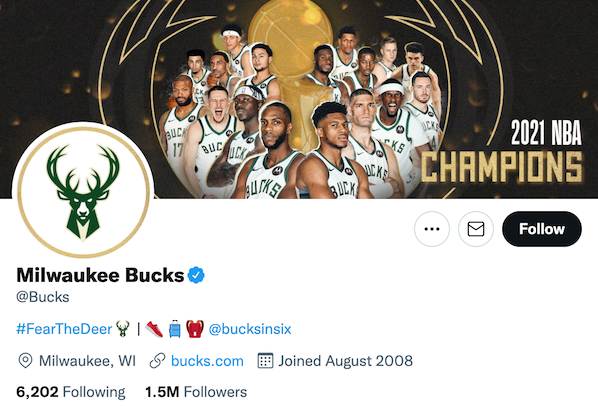
Milwaukee Bucks are the reigning 2021 NBA champions. The club has a large following and actively shares interviews with its players and fans, plus match highlights.
The sports and gaming category includes:
- Professional sports leagues, teams, rostered athletes, and coaches.
- Athletes participating in global competitions such as the Olympics and Paralympics.
- Official team pages of club and collegiate teams.
- Professional esports leagues, teams, rostered players, and coaches.
- Official accounts for game titles and related accounts.
Source: Twitter Help Center
Activists, organizers, and other influential individuals: Greenpeace
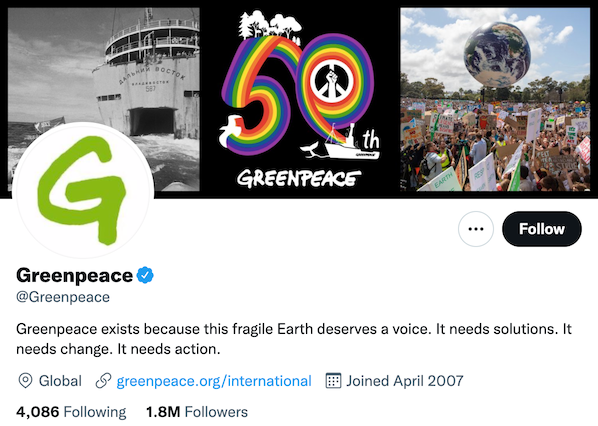
Greenpeace has campaigned for decades on climate, human rights, and political causes. It shares content on all the current issues facing humanity.
The activists, organizers, and other influential individuals category covers a broad spectrum outside the professional categories defined above.
It includes people who are using Twitter effectively to bring awareness, share information, and galvanize community members around a cause, to bring about socio-economic, political, or cultural change, or to foster community.
This category also covers “special circumstances”. For example:
- Medical professionals during epidemics or other public health crises.
- Activists and local political leaders in times of protest or connection with a significant cultural event.
- Public safety and journalist accounts reporting on natural disasters.
- Organizers, proponents, or founders of campaigns in support of civil or human rights.
Source: Twitter Help Center
How to Apply for the Twitter Blue Badge
Follow this 4-step process to apply for the Twitter blue badge:
- Getting your account in order
- Increasing your chances of getting the Twitter blue badge
- Applying for the Twitter blue badge
- Keeping hold of your blue badge
1. Getting your account in order
In addition to the category-specific eligibility criteria outlined above, your account must be:
- Complete: you have a profile name and profile image.
- Active: you have logged into your account within the last six months.
- Secure: you have either a confirmed email address or phone number.
- Compliant: you have a record of adherence to the Twitter Rules – i.e. you don’t have a 12-hour or 7-day lockout for violating the Twitter Rules in the past 6 months (excluding successful appeals).
You can read more about ineligible accounts in the policy as well.
2. Increasing your chances of getting the Twitter blue badge
It pays to have a solid Twitter marketing strategy to increase your chances of getting verified for the blue badge:
- Ensure you keep your Twitter branding consistent with your other social media accounts.
- Optimize your content with images, GIFs, and videos to boost engagement.
- Publish content consistently to build your presence on the platform.
- Build an active community to help amplify and promote your content.
- Analyze your Twitter marketing performance to see where you can improve.
When you follow the steps above, Twitter can see you’re taking the platform seriously and are worthy of the blue badge.
3. Applying for the Twitter blue badge
You can find the new verification application in the Account information page of the Settings tab. Here’s what the application flow looks like:
- Choose your category:
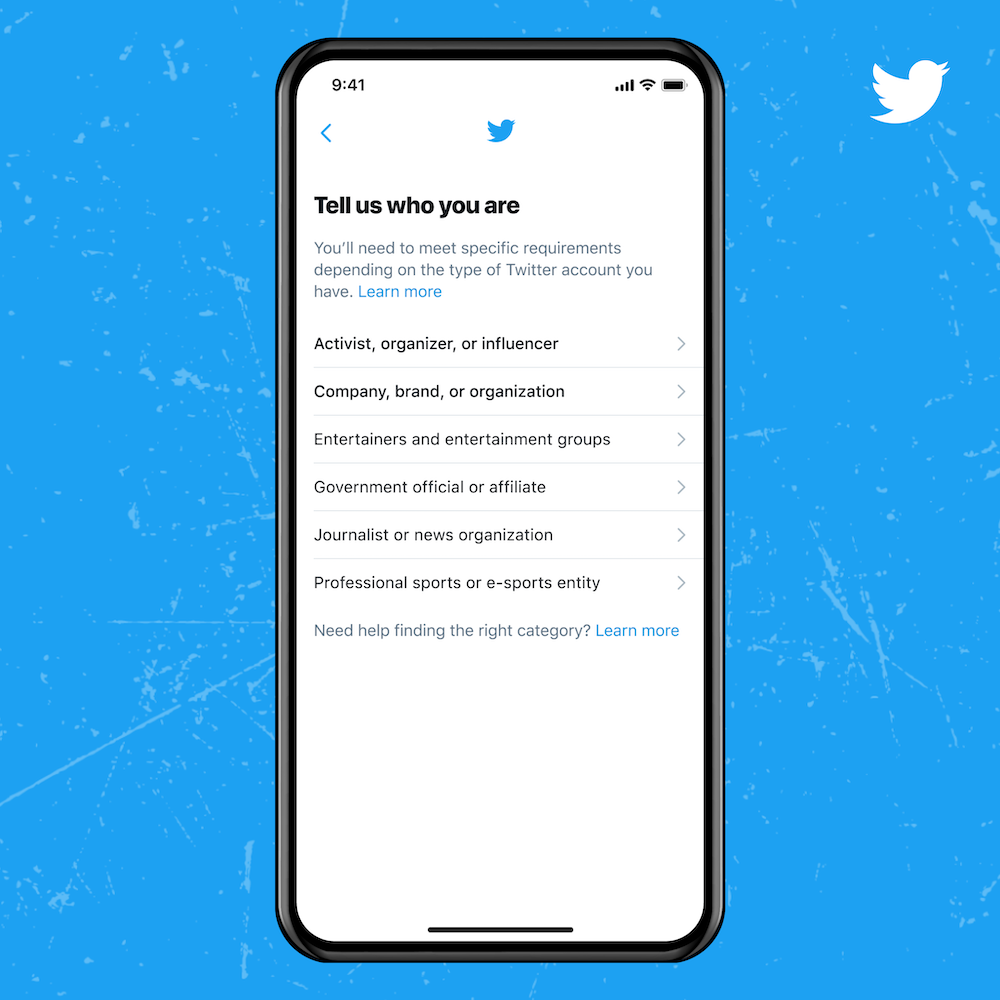
- Select your preferred identification method:
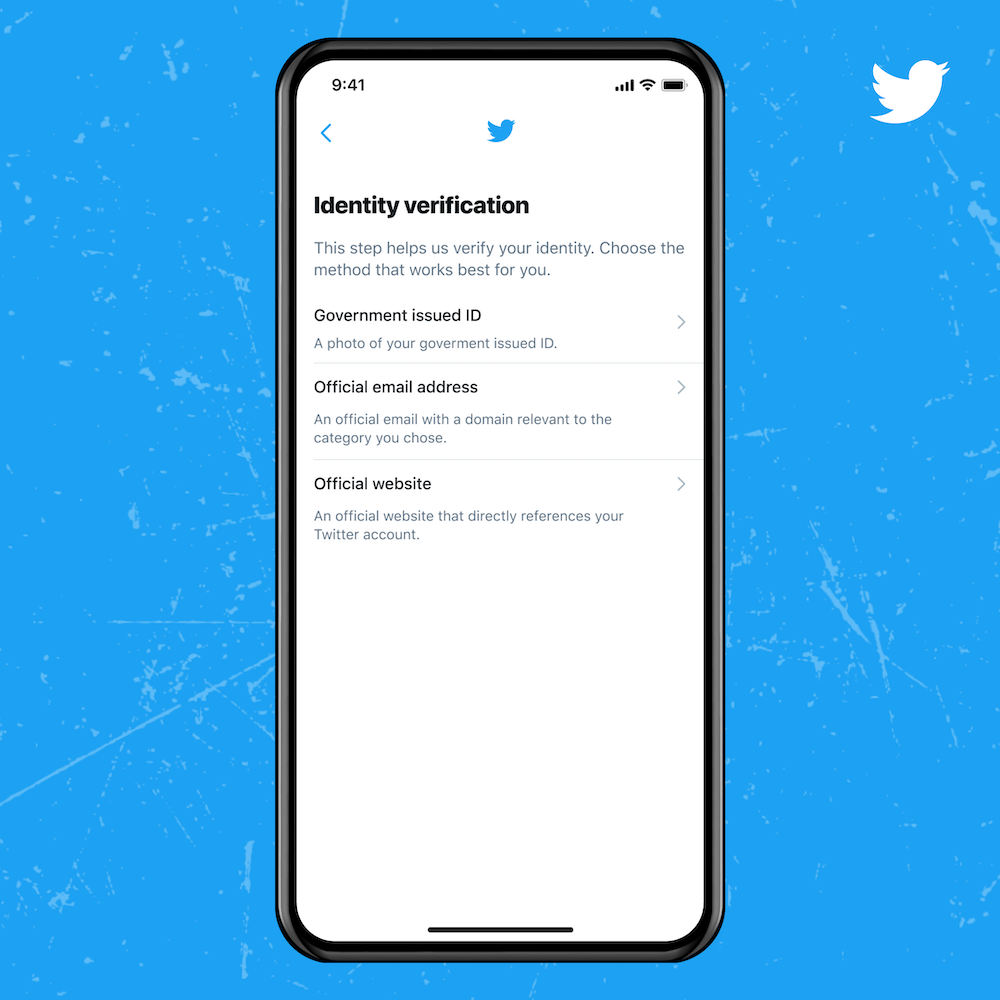
- Submit your application:
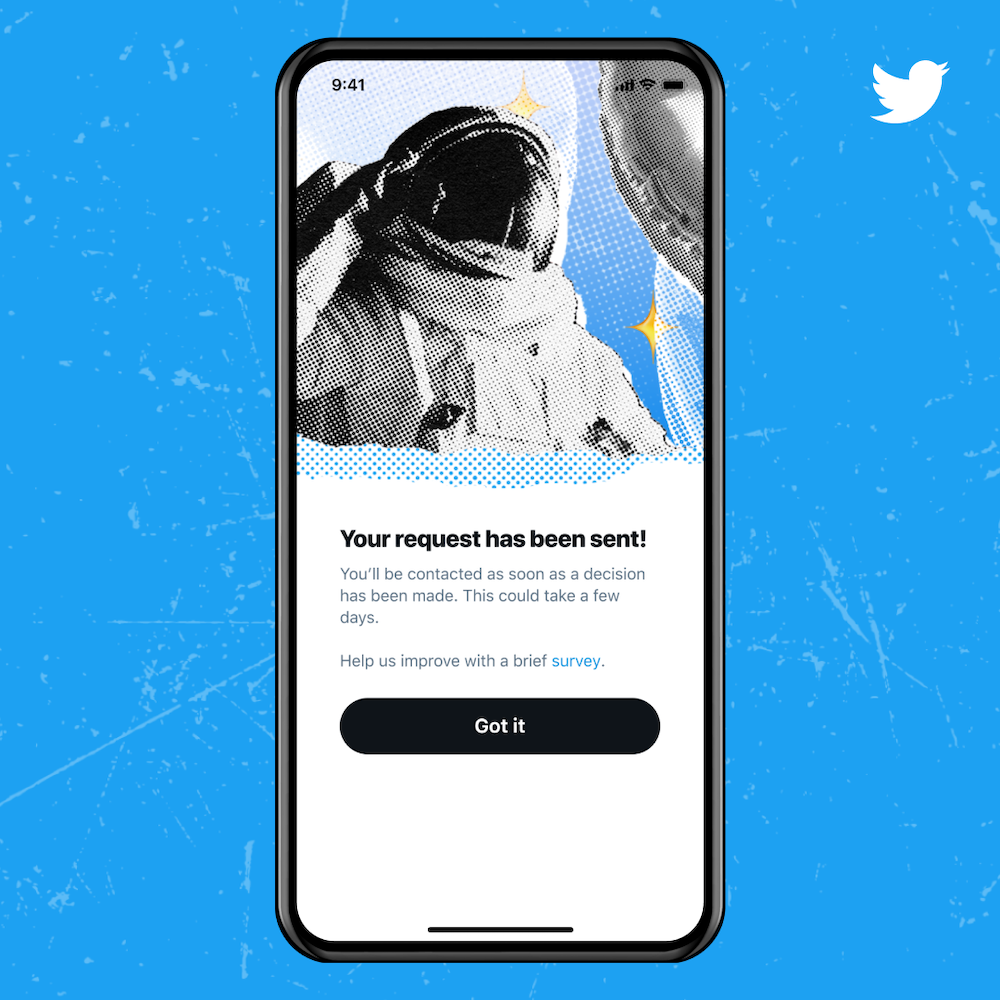
Once you submit your application, you can expect an emailed response from Twitter within one to four weeks, depending on the current volume of applications.
- If your application is approved, you’ll see the blue badge automatically on your profile.
- If your application is unsuccessful and you think there’s a mistake, you can reapply 30 days after the decision.
4. Keeping hold of your Twitter blue badge
If your application is successful, you still have to remain consistent on the platform.
Twitter can automatically remove verified badges from inactive and incomplete accounts.
You could also lose your Twitter blue badge if:
- You change your account name (@handle)
- You mislead people by changing your display name or bio
- You get suspended for violating Twitter rules
So, cherish your Twitter blue badge and keep publishing authentic content that people like.
The Twitter Blue Badge, in a Nutshell
Applications for the Twitter blue badge are open once again. Currently, Twitter is focused on active and notable accounts in six categories but plans to open up to more next year.
To increase your chances of getting verified, make sure you follow the steps outlined above. And, if your application is successful, make sure you keep posting top-notch content within the Twitter guidelines to retain your blue badge.
